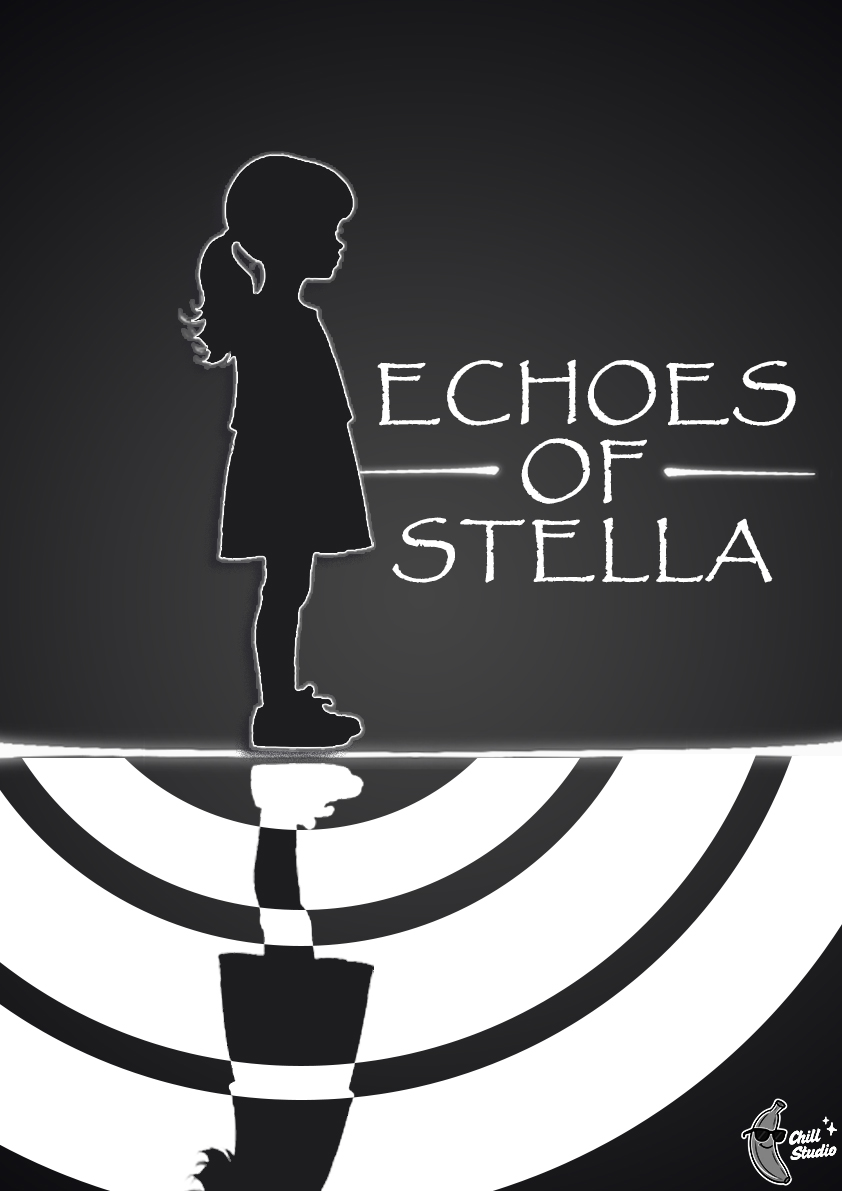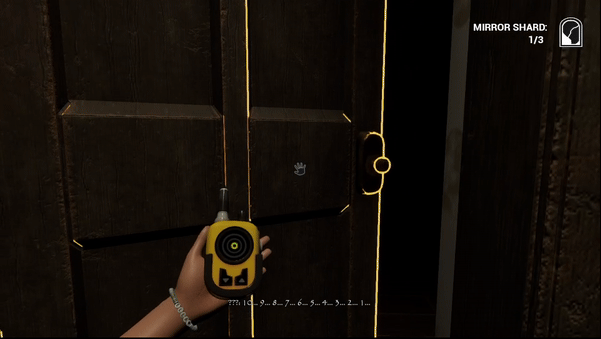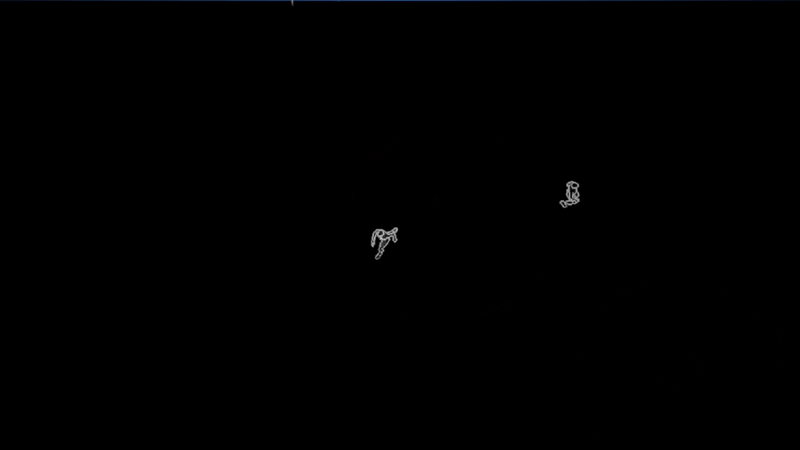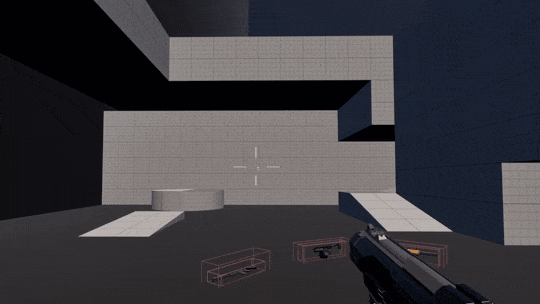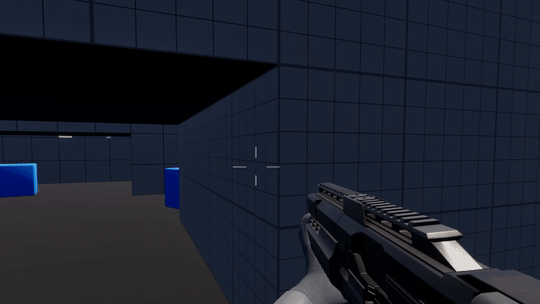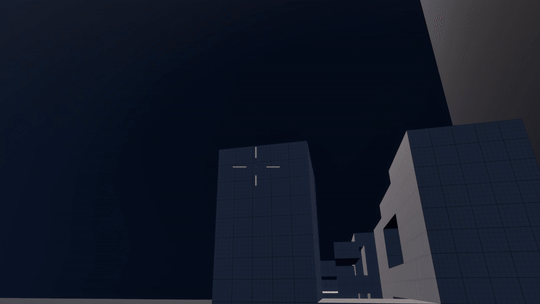Project: Echoes of Stella
What if sight itself was a risk? This first-person horror adventure is built around a unique echolocation mechanic. Plunged into darkness, you must make sound to see your surroundings, but every noise also alerts a relentless monster to your position. This creates a tense risk-reward loop where vision comes at the cost of survival.
Read more about the design process
3C's Design
3C's Design: Crafting a Vulnerable Player Experience
- Core Movement Prototyping: I implemented a standard but responsive control scheme, including a sprint function to allow for desperate escapes, and a crouch function that was essential for the hide-and-seek gameplay loop, allowing players to take cover under objects like sinks and beds.
- Iterative Design & Cutting Features: A key part of the design process was knowing what to remove to strengthen the core experience. We initially prototyped a leaning mechanic, but after playtesting showed that players found it hard to use or didn't use it as intended, I made the deliberate decision to cut it to avoid unnecessary complexity. Similarly, an early jump mechanic was removed after feedback highlighted that it created navigational confusion in our tightly designed levels.
- Camera Feel: The first-person camera was carefully tuned with a subtle head-bob to increase immersion, while ensuring it was stable enough to not cause motion sickness during tense chase sequences.
Systems Design: From Proof-of-Concept to Gameplay Loops
As a systems designer on this project, I was responsible for several key interactive elements that shaped the core gameplay. My most significant contribution was prototyping the central "echo mechanic". The initial idea was met with some skepticism about its technical feasibility. To prove its potential, I independently developed a proof-of-concept in a few days. This working prototype successfully demonstrated the mechanic's value, was instrumental in getting full team buy-in, and became a cornerstone of the final game's puzzle and exploration loops.
- The "Echo Mechanic" (Proof-of-Concept): My most significant contribution was prototyping the central "echo mechanic". When the initial idea was met with skepticism regarding its technical feasibility, I independently developed a proof-of-concept in just a few days. This working prototype successfully demonstrated the mechanic's value, was instrumental in getting team buy-in, and became a cornerstone of the game's puzzle and exploration loops.
- Tension-Based Door Mechanics: I designed the behavior for all doors in the game, focusing on creating suspense with slow opening speeds and deliberate audio cues.
- Hiding & Stealth Systems: I designed and implemented the logic for all designated hide spots, and also pitched and prototyped the idea of secret passages to give the player strategic options to navigate the environment and evade threats.
Post-Mortem: Reflections from a Prototype
Key Takeaway:
"My key takeaway is that a 'less is more' approach, validated through rapid prototyping, is the most effective way to create a clear and emotionally resonant player experience. A prototype proves an idea more powerfully than any document ever could."
What Went Well:
- The Value of Prototyping: This project reinforced my belief that prototypes are the best communication tool. Being able to show a playable version of an idea is far more effective at conveying a vision and getting feedback than a design document alone.
What Could Be Improved:
- The "Kill Your Darlings" Principle: Through the process, I learned the valuable lesson that some features, even if they seem cool initially, can be unnecessary and ultimately confuse the player. A tighter, more focused design is often stronger. This project made me more confident in cutting features that don't serve the core experience.
Project: Modular Weapon System Work in Progress
This work-in-progress prototype is a deep dive into creating a modular and tactical weapon system in Unreal Engine. The focus is purely on systems design, featuring procedural recoil, a dynamic two-slot inventory, hit-zone based damage, and procedural animations using Inverse Kinematics (IK) to create a responsive feel for any weapon.
Read more about the design and systems
Key System Features
- Data-Driven Architecture (Data Tables & Structs): The entire weapon system is built on a data-driven foundation using Unreal Engine's Structures and Data Tables. I designed a master 'Weapon Data' Struct to hold every variable—from damage and recoil stats to the assets themselves, including weapon models, animation sets, muzzle flash FX, and impact sounds. This makes the system highly modular and scalable; new weapons can be created and balanced entirely within the Data Table.
- Modular Two-Slot Inventory: The player can carry two weapons at a time. The system is built to be modular, allowing for easy expansion. Players can drop, throw, and pick up weapons dynamically from the environment.
- Procedural Recoil & Weapon Stats: To enhance the tactical feel, all 5 prototyped weapons (3 full-auto, 2 semi-auto) use a procedural recoil system. While the first shot is always accurate, subsequent shots have calculated deviation based on each weapon's unique stats.
- Procedural Animation w/ IK: To avoid creating unique animations for every weapon, the system uses procedural animations with Inverse Kinematics (IK). This allows the character's hands to realistically adapt to any weapon model. The system also includes weapon collision, pulling the gun back when aiming near a wall.
- Dynamic Damage Model: The prototype features different hit-zone checks. A weapon's damage output and the resulting sound, splatter effect vary depending on whether a shot hits an armored or unarmored surface.
Future Development & Vision
This prototype is an ongoing effort and the foundation for what I envision as my graduation project. The immediate next steps in the design process include:
- Implementing a stamina system that affects the player's ability to Aim Down Sights (ADS) for extended periods, adding another layer of tactical decision-making.
- Continuously iterating to find the perfect balance between challenging, tactical gameplay and a fun, engaging player experience.

